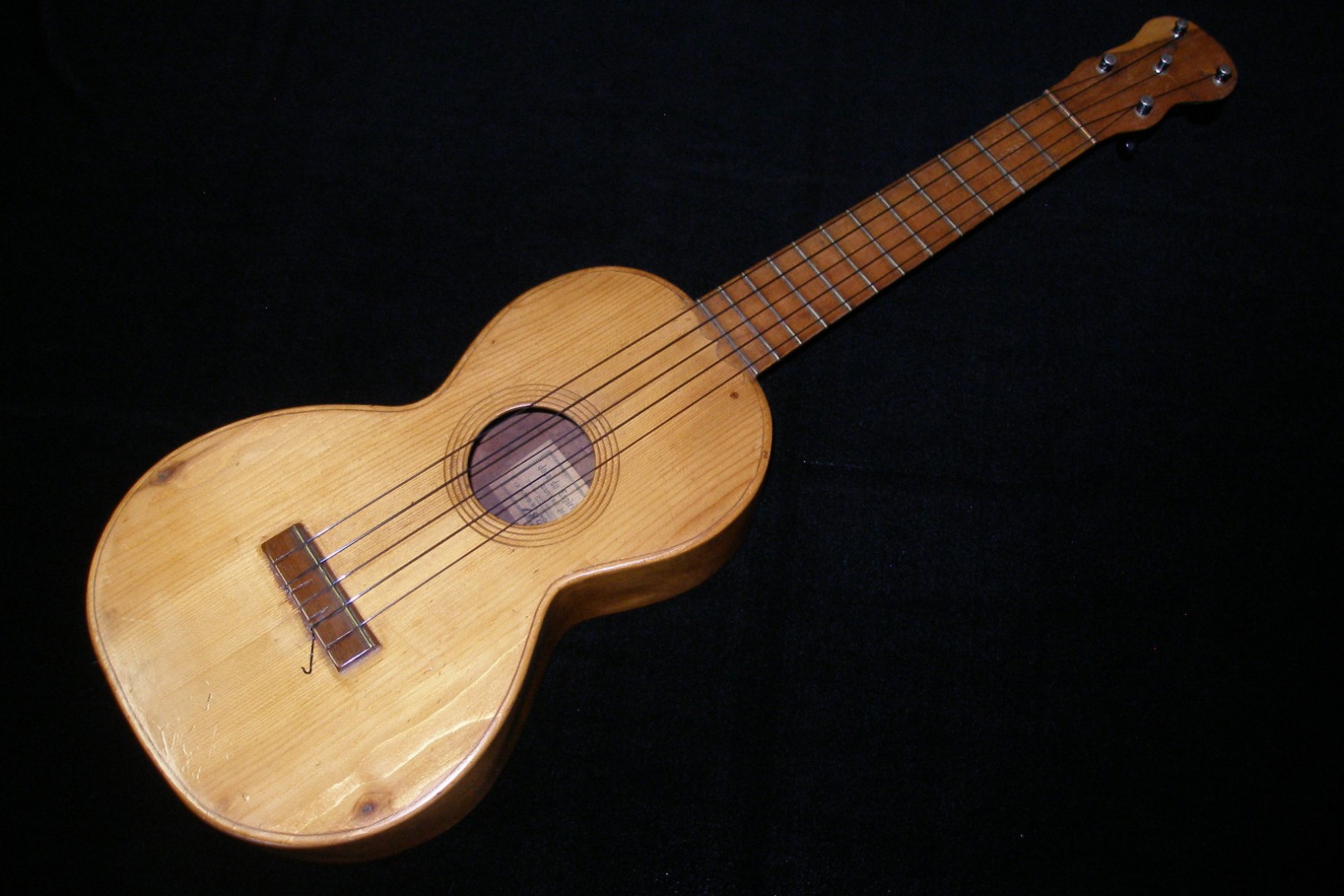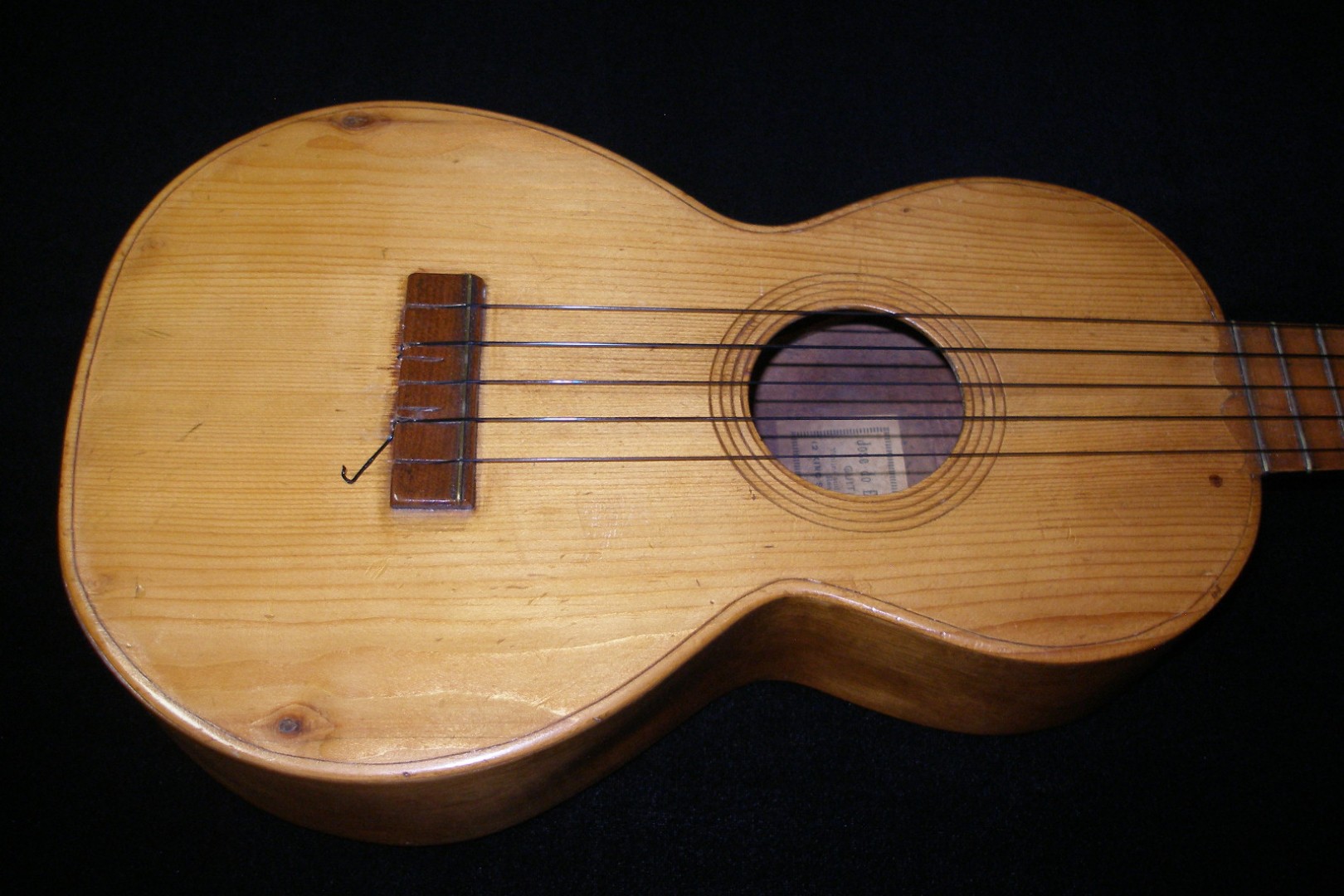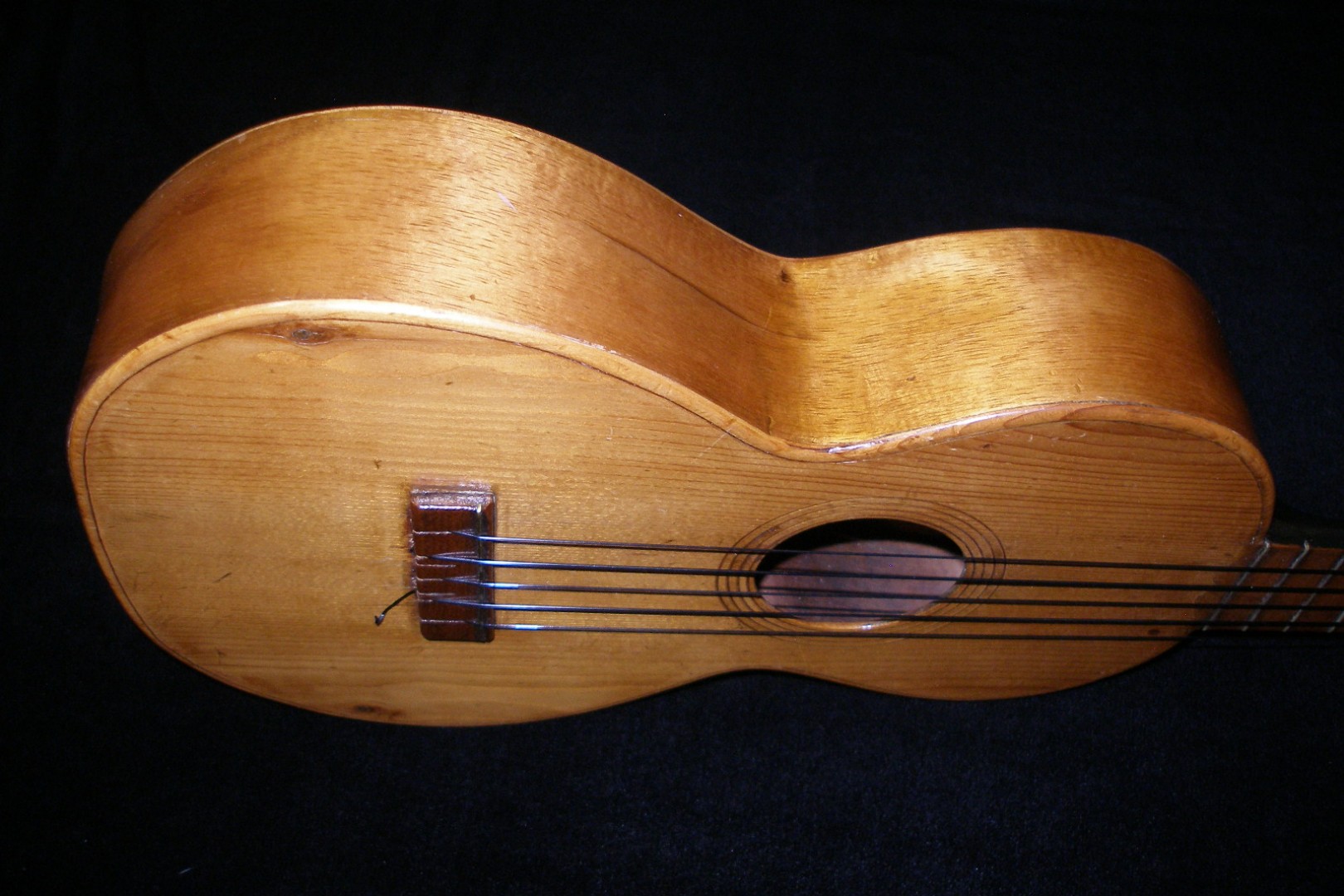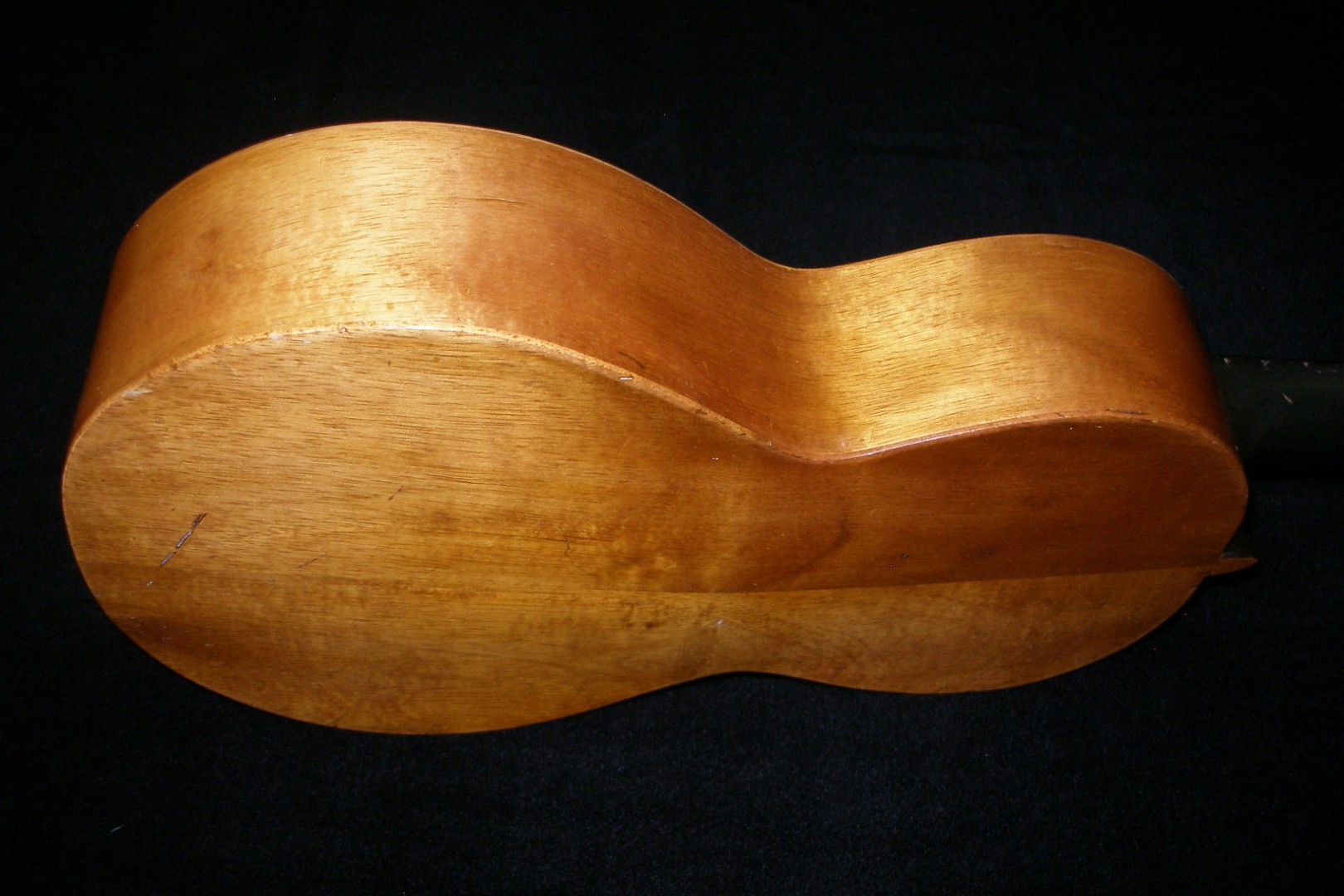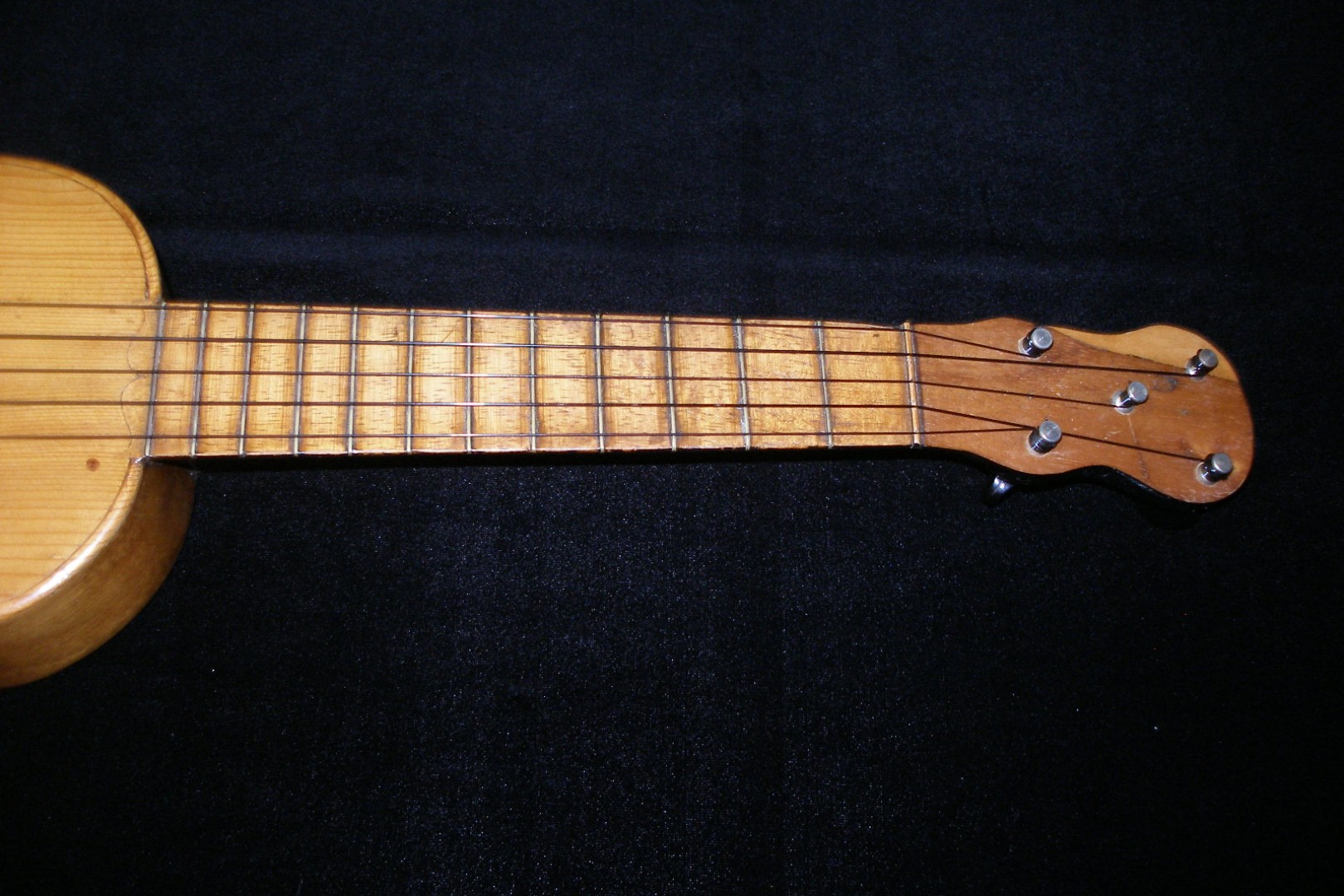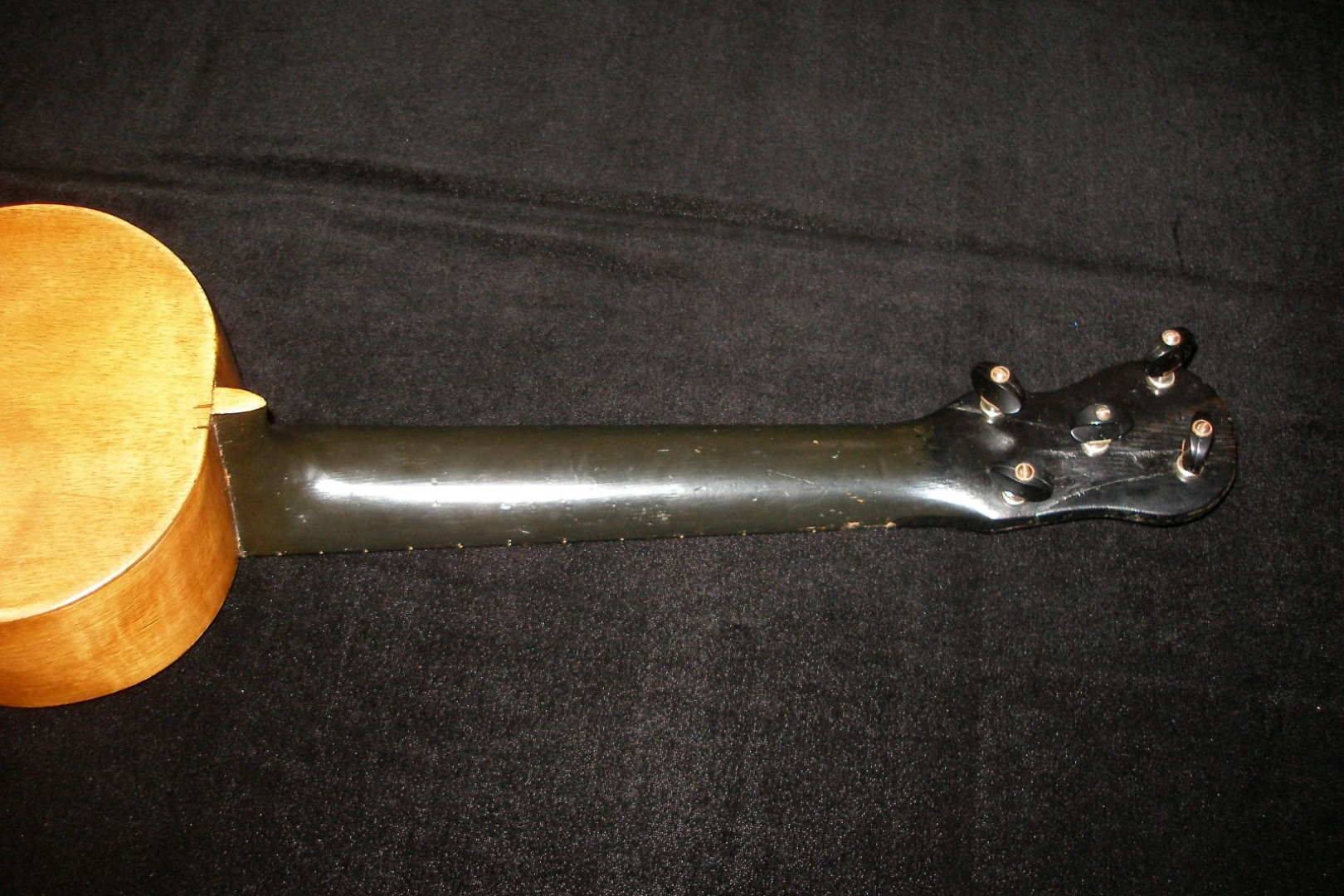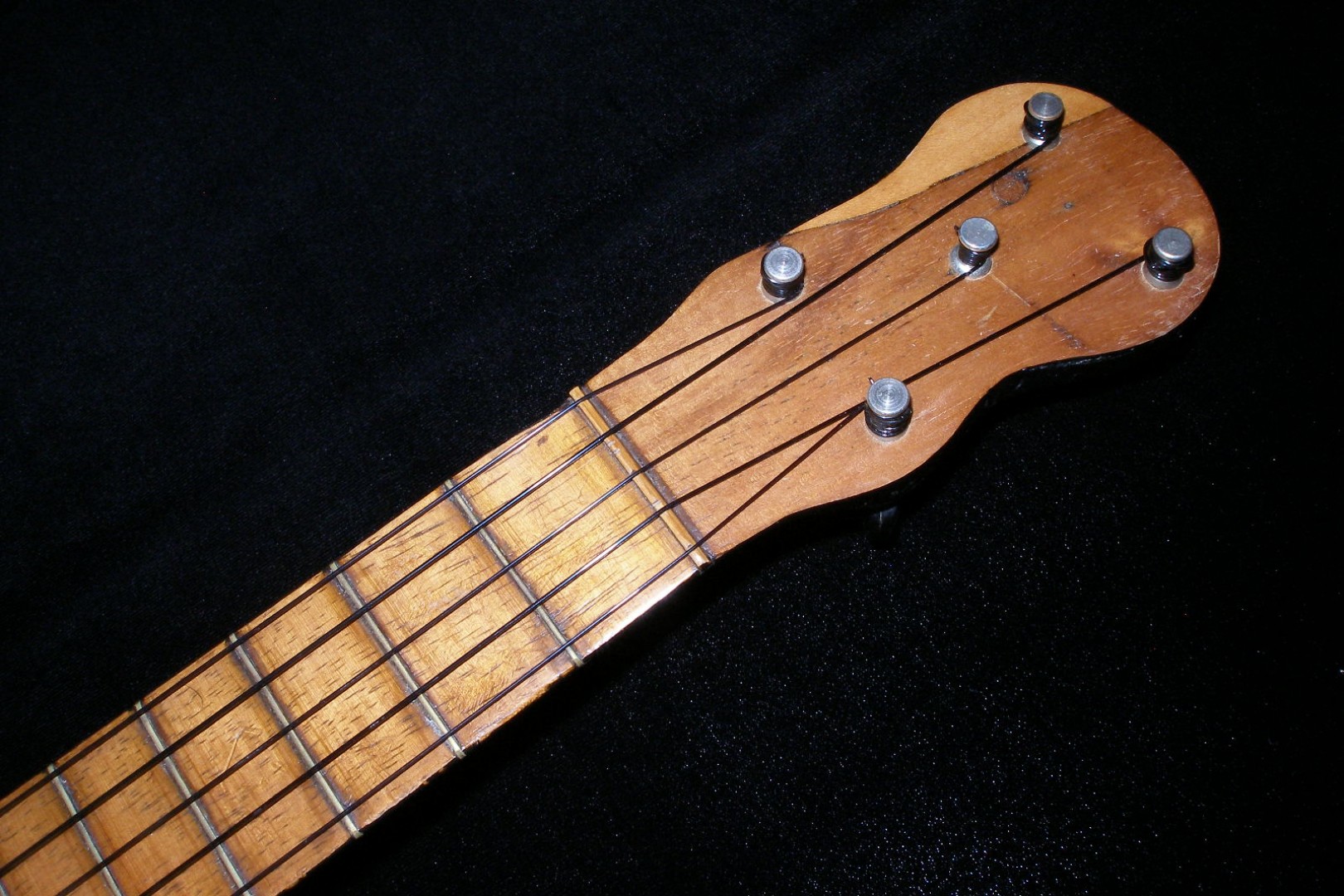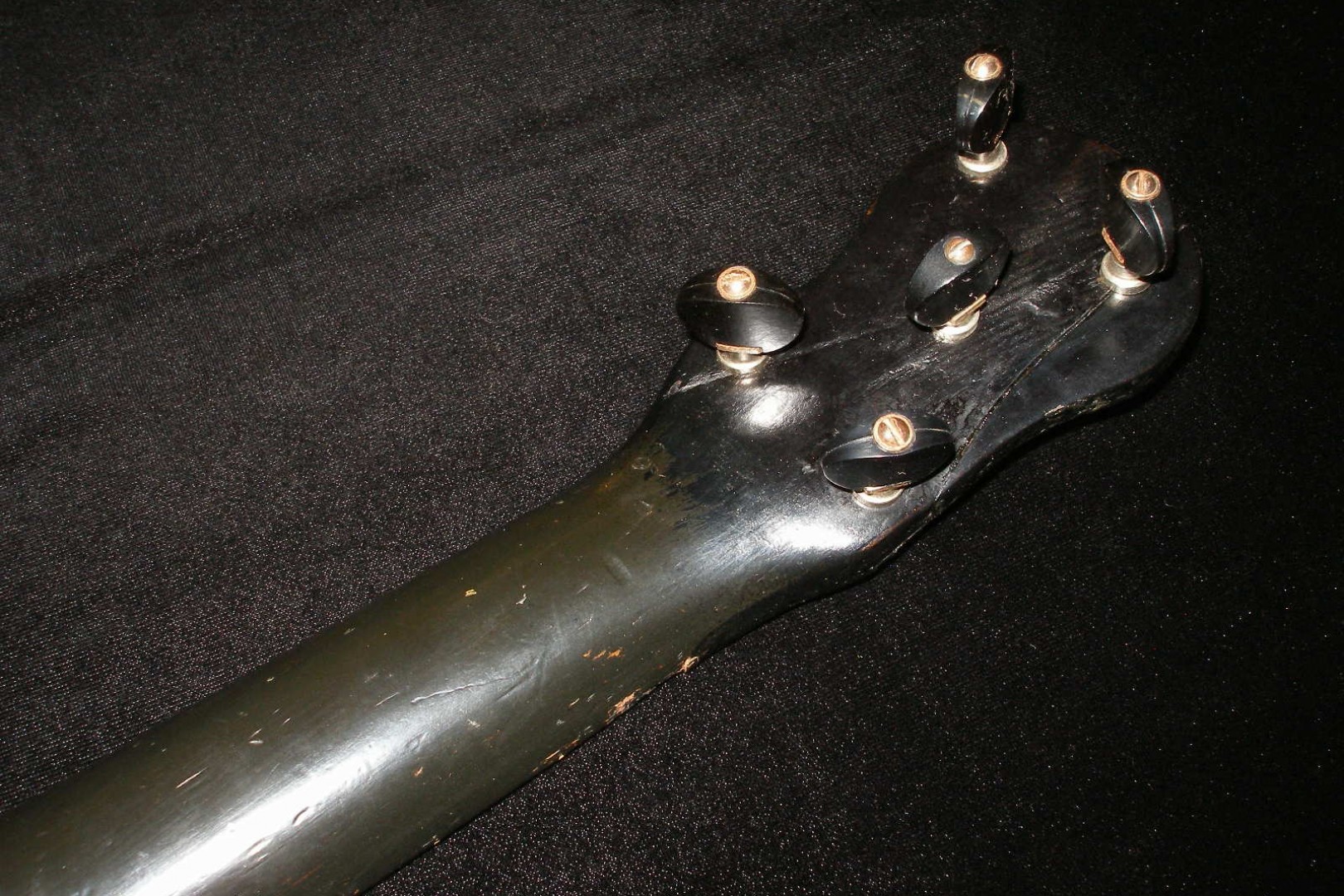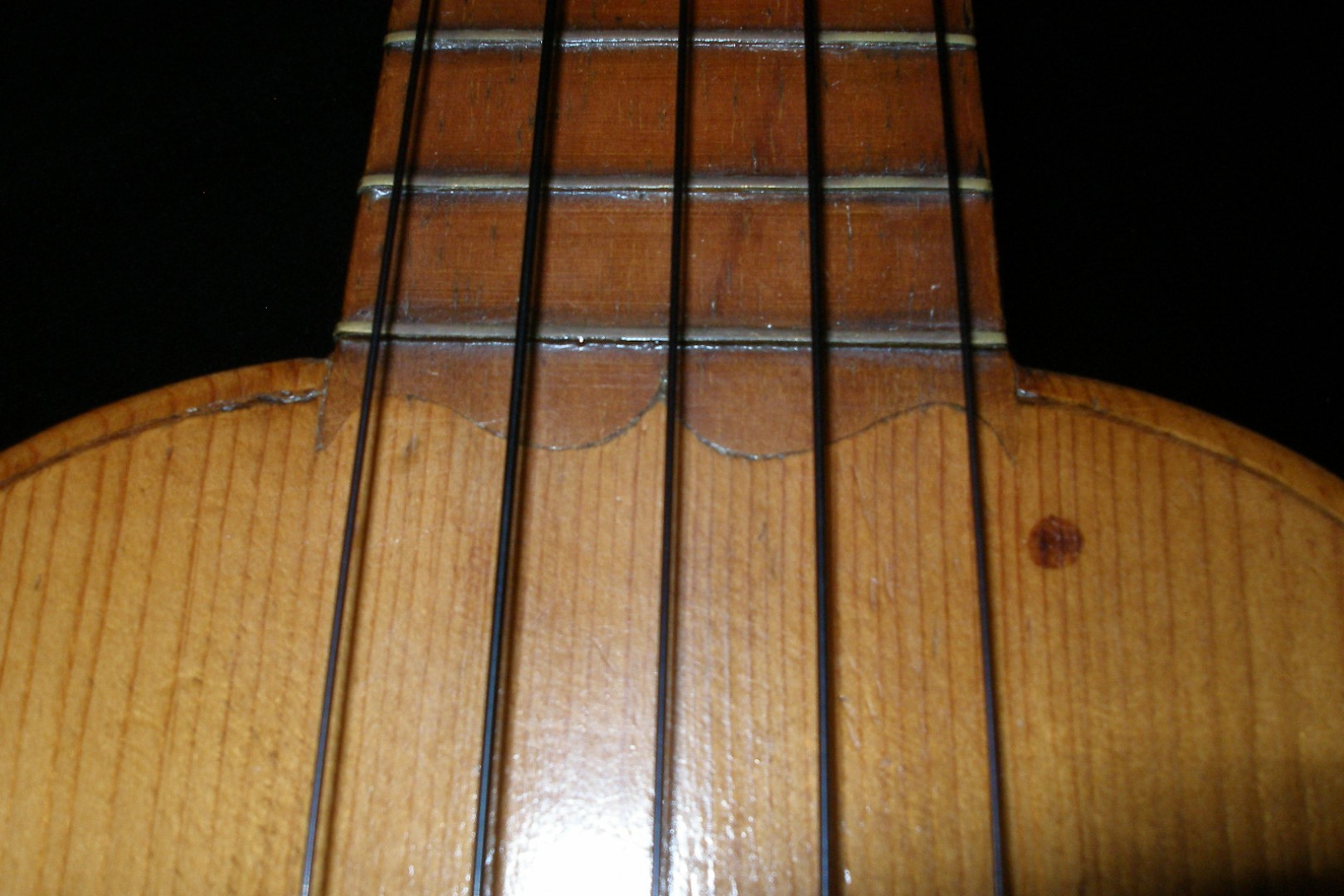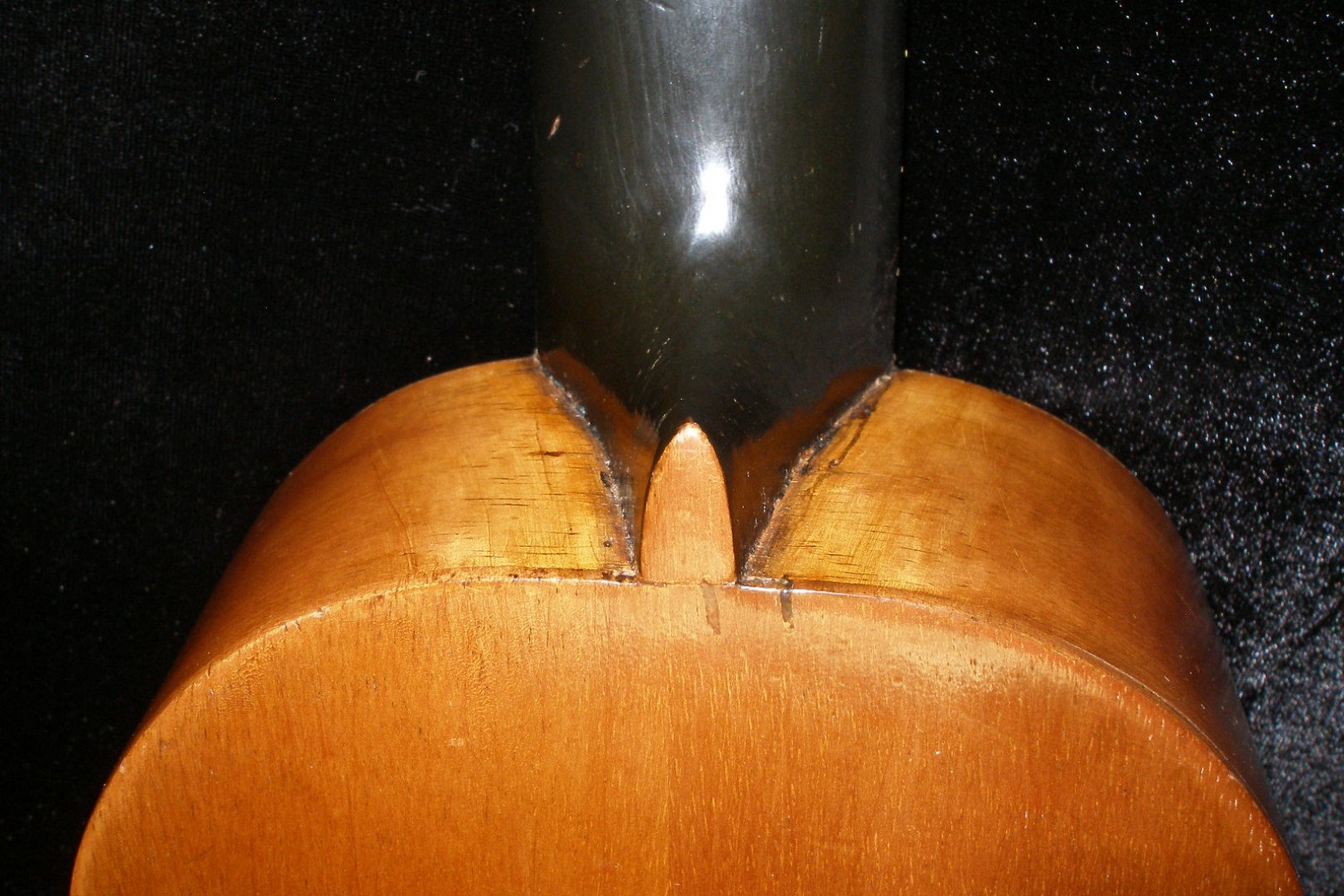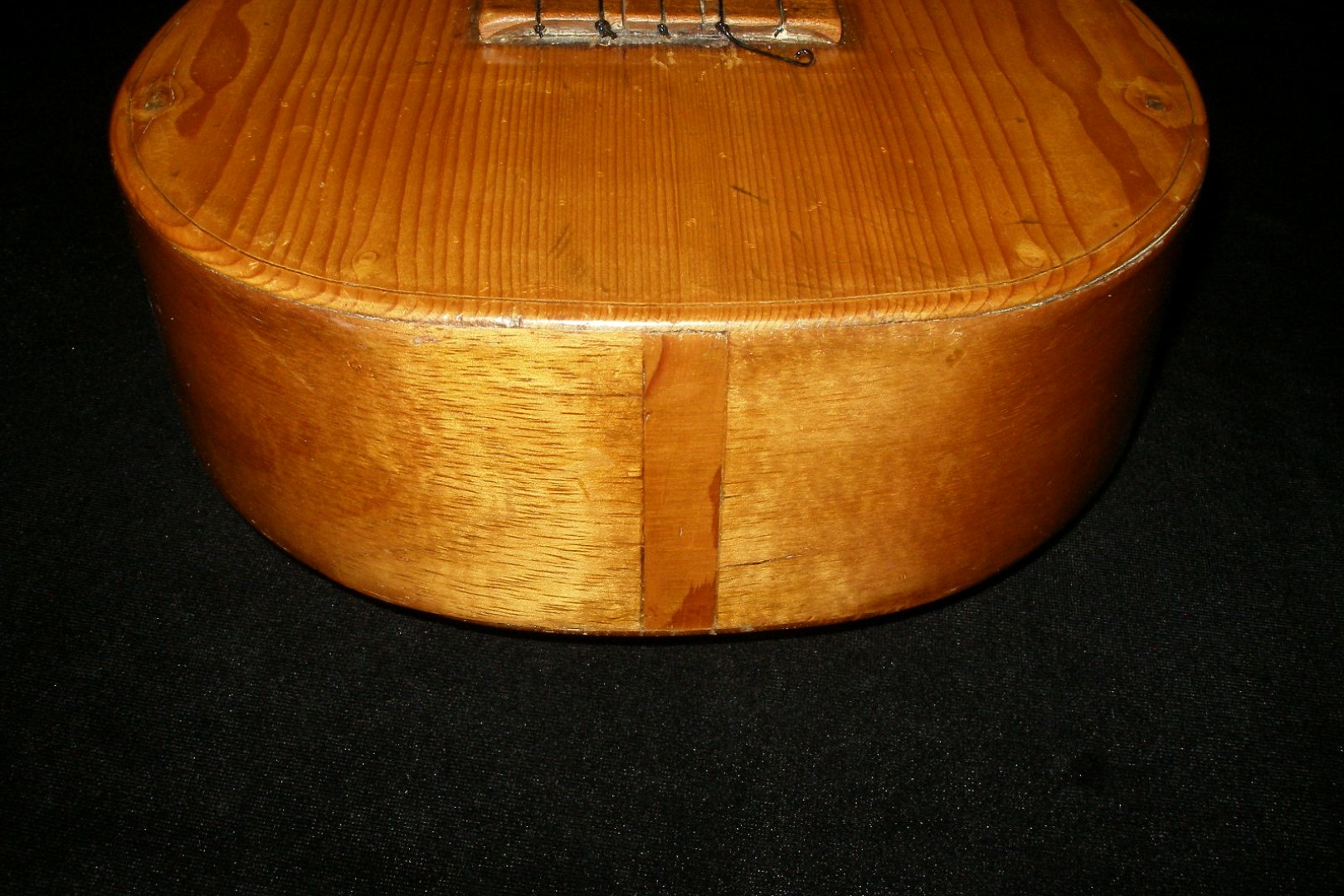1890 Jose do Espirito Santo Rajao
Considered one of the parent instruments of the ukulele, the ukulele is believed to have received its current tuning of G-C-E-A from the Rajao, which is tuned D-G-C-E-A. To my knowledge there are only a few examples of these early historical instruments in existence that have been made in Hawaii.
This extremely rare 1891 Santo 5-String Rajao is a world class collectible over 100 years in age. The instrument originated on the island of Madeira, Portugal and was handcrafted by one of three portuguese cabinet makers (Jose do Espirito Santo, Augusto Dias, and Manuel Nunes) who first came to Hawaii in the late 1800s; and, in turn, were credited with the invention of the ukulele.
Jose Do Espirito came over with the second group of Portuguese immigrants to Hawaii in late August 1879 on the boat named “Ravenscraig”. You can see a similar uke on a soprano scale and newer than this one at the Bishop Museum in Honolulu, HI. This is Hawaii’s leading museum on Hawaii historical artifacts. The label on their has his shops King Street address while the label on this uke.
The history behind this particular Santo uke is that it was allegedly owned by Robert William Wilcox, a native Hawaiian and revolutionary that was in opposition to the Annexation of Hawaii.
The black paint on the back of the next was supposedly done by Mr. Wilcox and has remained that way ever since. (There is no documentation to support this claim but this is what I was told. Ukes like this though don’t exchange hands often and in most cases the stories that come with them are somewhat accurate, if not, entirely accurate. People from this era never document these things and so the instrument is passed down within the family from one member to the next with the ‘oral’ history of the piece.)
I am also enclosing a photo that is frequently referenced regarding this particular ukulele. The photo has three Hawaiian women, one holding the very same Santo that is up for sale. Look closely at the headstock of the uke and the size proportionate to the player and you’ll see that it’s a Rajao.
A very serious collectible piece which many museums have never seen. The back and sides are koa wood and the soundboard is handcrafted of spruce. It’s very light and there have been some repairs to the headstock etc. All in all, it’s an amazing piece and the only one known to be out there.
Price: SOLD

